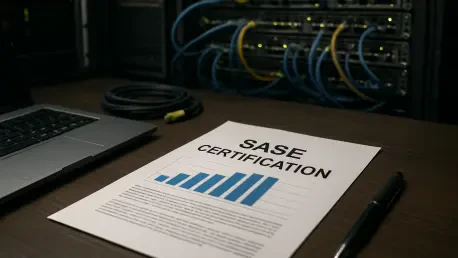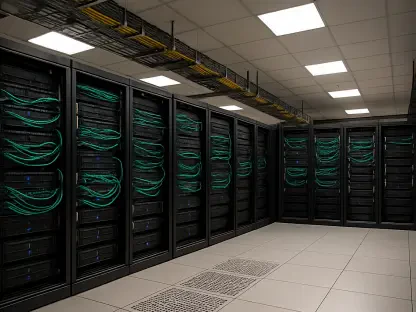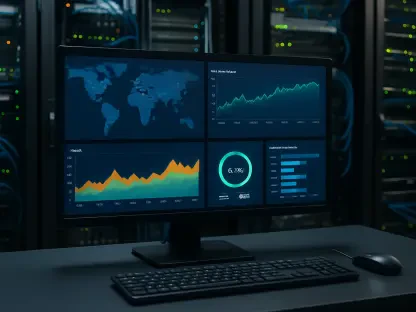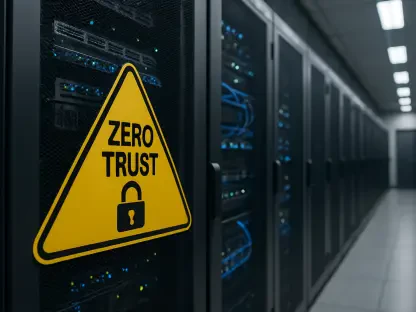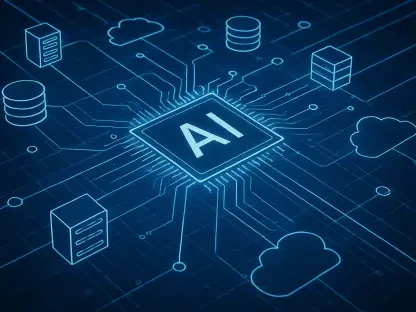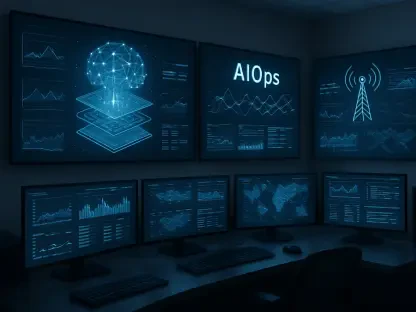I’m thrilled to sit down with Matilda Bailey, a renowned networking specialist with a deep focus on cutting-edge technologies like cellular, wireless, and next-gen solutions. With cyber threats evolving at an unprecedented pace and enterprises racing to secure their digital transformations, Matilda brings invaluable insights into the growing demand for Secure Access Service Edge (SASE) certification. Today, we’ll dive into why this certification is becoming a cornerstone for trust and resilience, how AI-powered threats are reshaping cybersecurity, and what this means for the future of secure connectivity.
Can you explain what SASE certification means for enterprises and why it’s gaining so much traction right now?
SASE certification is essentially a stamp of trust for enterprises looking to secure their networks and data in a cloud-first, distributed world. It combines networking and security into a unified framework, ensuring that solutions meet rigorous, independently verified standards. Right now, with digital transformation accelerating and remote work becoming the norm, enterprises are dealing with sprawling networks that are harder to protect. SASE certification is gaining traction because it offers a way to cut through the noise of vendor claims and provides a reliable benchmark for performance and security at a time when cyber risks are skyrocketing.
How does SASE certification stand out compared to other security standards or certifications in the market?
What makes SASE certification unique is its holistic approach. Unlike many traditional security standards that focus on specific components—like firewalls or endpoint protection—SASE certification integrates networking and security services into a single, cloud-native architecture. It’s not just about checking boxes for compliance; it’s about ensuring seamless interoperability and real-world effectiveness across distributed environments. This comprehensive validation sets it apart from narrower certifications that might leave gaps in a company’s overall security posture.
With AI-powered cyber threats on the rise, how are these new attack methods changing the landscape of cybersecurity?
AI is a game-changer for both defenders and attackers. On the threat side, AI enables attackers to automate and personalize their campaigns at scale. They can analyze vast amounts of data to craft highly targeted phishing emails or mimic legitimate user behavior to bypass detection. This adaptability means attacks are faster, stealthier, and more destructive. For cybersecurity, it’s a wake-up call to move beyond static defenses. We need dynamic, intelligent systems that can keep pace with these threats, and that’s where certified frameworks like SASE come in—they provide a foundation to build and scale those defenses effectively.
Can you share a specific example of how AI is being weaponized by attackers to make their methods more dangerous?
Absolutely. One striking example is the use of AI in creating deepfake audio or video for social engineering attacks. Attackers can replicate a CEO’s voice, for instance, using just a few minutes of publicly available audio, and then call an employee to urgently transfer funds or disclose sensitive data. These attacks exploit human trust, and they’re incredibly hard to detect without advanced behavioral analysis tools. It shows how AI lowers the barrier for sophisticated attacks, making robust, certified security solutions an absolute necessity for enterprises.
The complexity of managing multiple security tools is a big pain point for many organizations. How does SASE certification help address this issue?
SASE certification tackles complexity head-on by promoting a consolidated approach. Instead of juggling dozens of point solutions—each with its own dashboard and policies—SASE brings networking and security under one umbrella. Certification ensures that these integrated solutions are tested for compatibility and effectiveness, so enterprises aren’t left stitching together mismatched tools. This reduces blind spots and simplifies management, allowing IT teams to focus on strategy rather than firefighting integration issues.
How does having a certified standard specifically reduce vulnerabilities or gaps in an enterprise’s security setup?
A certified standard like SASE acts as a blueprint for eliminating weak links. It ensures that every component—whether it’s zero-trust access, secure web gateways, or cloud security—works cohesively and meets a baseline of protection. Independent testing identifies and addresses potential gaps before deployment, so enterprises aren’t left vulnerable to misconfigurations or interoperability failures. Essentially, certification minimizes the cracks that attackers often exploit when systems don’t talk to each other effectively.
Certification is often tied to benefits like assurance, transparency, efficiency, and readiness. Can you paint a picture of what assurance looks like for IT leaders in practical terms?
Assurance, in the context of SASE certification, means peace of mind for IT leaders. When a solution is independently tested and certified, it’s been put through the wringer to prove it can handle real-world threats and performance demands. For a CIO or CISO, this translates to confidence when justifying investments to the board or stakeholders. They know they’re not just relying on a vendor’s word but on hard evidence that the solution will protect their critical operations, even under pressure.
What does transparency mean when enterprises are evaluating providers, and why is a level playing field so important?
Transparency through certification means enterprises can compare providers based on a consistent set of standards, not just marketing hype. It’s about knowing exactly what you’re getting—whether a solution meets specific security thresholds or integrates with your existing systems. A level playing field is crucial because it prevents larger vendors from dominating through vague promises or proprietary lock-ins. It empowers enterprises of all sizes to make informed choices, fostering trust and driving competition based on actual performance.
Looking at the bigger picture, what’s your forecast for the role of SASE certification in shaping the future of cybersecurity over the next few years?
I believe SASE certification will become the gold standard for secure connectivity in the next three to five years. As AI-driven threats continue to evolve and regulatory pressures tighten, enterprises won’t settle for unverified solutions. Certification will likely expand beyond just technical validation to include benchmarks for scalability, user experience, and even sustainability in network operations. It’s going to be a key driver in rebuilding trust between providers and enterprises, ultimately creating a more resilient digital ecosystem where innovation can thrive without compromising security.
